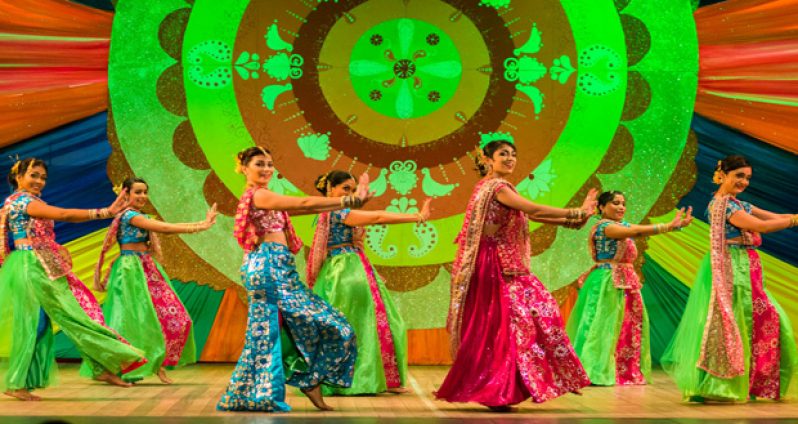OUR society is a multi-ethnic one; a society made up of different races, each with its own culture. But when one combines a variation of cultures, what you get is a canvas on which each bold stroke of differing colour forms an abstract piece of beauty.
And on this particular canvas of ours, one of the more dominant strokes would be the Indian culture and form.
INDIAN DANCE
The story of the coming of indentured labourers from India, bringing with them their own unique culture, is one that is embedded in Guyana’s history. It is through this medium that Indian dance came to Guyana’s shores.
Indian dance is divided into three distinct categories: “Classical”, “Folk” and “Bollywood.”
What separates the three, however, is not limited to just the name, as while the classical forms of Indian dance have more of a spiritual and cultural content and connection, the Folk and Bollywood forms have more celebratory elements.

THE CLASSICS
Indian classical dance has been around for more than a thousand years. Classical art forms include Kathak (which has its origins in Uttar Pradesh), Bharatnatyam (Tamil Nadu), Kuchipudi (Andhra Pradesh), Manipuri (Manipur), Odissi (Orissa), and Kathakali and Mohiniattam (Kerala).
The classical aspect of Indian dance is considered amongst most dancers and teachers as the hardest form of them all, in that it requires a great amount of dedication, hard work and discipline.
Here in Guyana, however, the most common classical Indian forms being practised are the Kathak, Bharatnatyam and Odissi. These art forms are commonly done for traditional and religious purposes. These are very strict forms, with precise and strict hand movements (mudras) and instructions.
FOLK
Folk dances, on the other hand, are of a more simple nature, and are performed to express joy.
Many of these forms do not follow a strict framework. These dances arose as a result of India having many daily festivals and celebrations. These festivals later encouraged the growth of folk dance.
All the festivals are accompanied by celebration, and there is no better way than that of dance. Thus, folk dances are the main dance forms at these events.
IN GUYANA
It is impossible to mention Indian dance in Guyana without mentioning Naya Zamana. In fact, the name Naya Zamana has become synonymous with the art form in Guyana. It is the annual dance production of the Guyana Hindu Dharmic Sabha.
The production features choreography by Dr. Vindhya Persaud and Trishala Simantini Persaud. This annual production is an opportunity for the students of the Dharmic Sanskritik Kendra, who are taught free of charge in Kathak and other dance styles, to showcase what they have learnt.
The perennial cultural event is staged at the National Cultural Centre (NCC), and has received critical acclaim and awards since its established presence.
The dance troupe that performs at Naya Zamana is called the Dharmic Nritya Sangh, and has performed extensively in Guyana as well as in New York, Toronto, Trinidad, Barbados and St. Lucia.
Among their notable performances are those at CARIFESTA (The Caribbean Festival of Arts), CARICOM Heads of Government Conferences, The Rio Summit, Naya Zamana and various other national events in Guyana.
With a rich heritage and a contribution in diversity, Indian culture has impacted Guyanese society. The Hindu Dharmic Sabha, through their teachings of Indian dance, bridges the gap between Indo-Guyanese and their roots.



.jpg)









